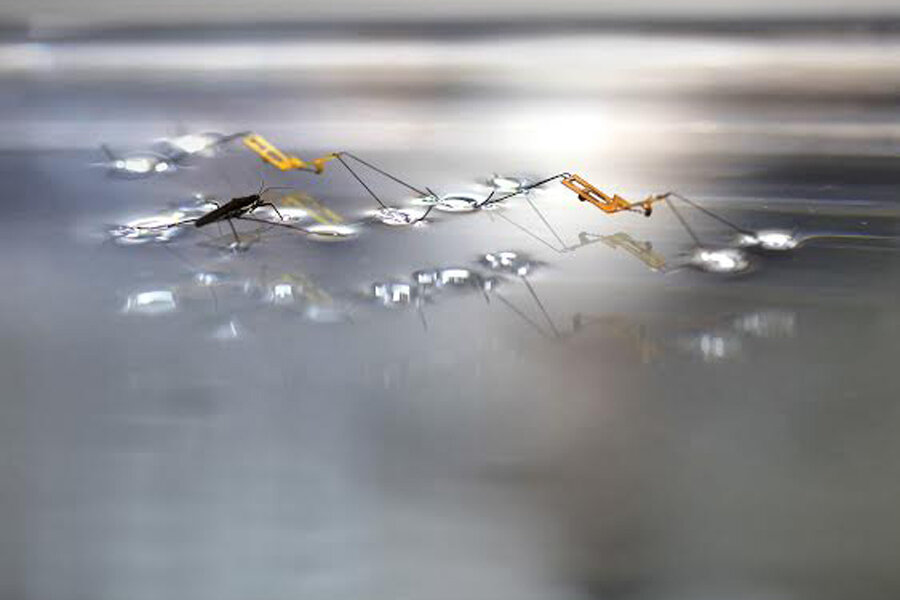Water strider robot: This bug-inspired bot can hop on water
Loading...
Mechanical engineers from Seoul National University have developed a robotic insect that can jump on water.
By closely examining the biological mechanisms used by water striders, they were able to replicate them in a simple, ultra-light robot. Researchers say their technology, which was described Thursday in the journal Science, could someday be used in surveillance missions.
Jumping requires a large amount of force on the starting surface. It’s easy enough on solid ground – just push off with your feet and you’re airborne in no time. But water proves trickier, because too much force will break the surface tension.
When exposed to danger, water striders are capable of impressive lateral propulsion, able to jump as high on water as they do on land. With long, thin legs, they push off with just a small amount of torque. As they take off, they rotate their legs, gradually increasing torque – this provides enough lift to complete the jump while maintaining the surface tension of the water. Until now, human engineering failed to replicate that mechanism.
Technically, the first robot capable of leaping from the water’s surface was developed in 2012. But according to co-authors Ho-Young Kim and Kyu-Jin Cho, that robot borrowed more from the basilisk lizard than the water strider. Using wide paddles to skip across the surface, it used drag, rather than surface tension, to stay afloat.
“Although several small-scale robots inspired by the water strider have demonstrated the ability to float and locomote on water by partly or fully using surface tension, none of them jumps on water,” the study reads. “Furthermore, jumping that involves interactions between the unconstrained free body and the liquid surface has been poorly understood at the scale of insects.”
Water striders are an excellent example of what Drs. Kim and Cho call “physical intelligence.” Creatures with relatively low intelligences are capable of extreme locomotion – like flying and swimming – because the “intelligence” is embedded in their morphology. Anatomically speaking, water striders are designed to be extremely efficient on-water jumpers. By examining high-speed video of jumping water striders, researchers were able to imbue their own robot with the same physical intelligence.
With some tweaking, this insectoid robot could be used for environmental monitoring or disaster area surveillance. Such a use would support the notion that a swarm of cheap, small robots could outperform a single robot that is more versatile, but also more expensive. But researchers say the real focus of the study was understanding. In recreating nature, they hoped to deepen their understanding of the principles and mechanisms behind it.









